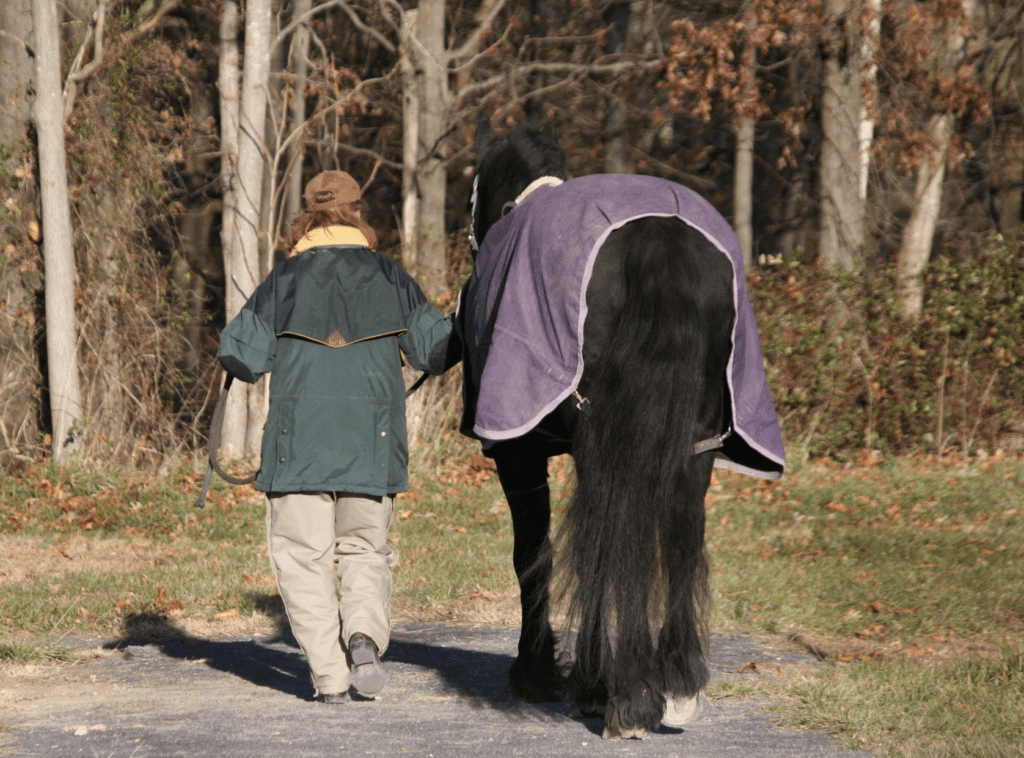Tips for cooling out after winter rides
- January 19, 2024
- ⎯ Equus
Possibly one of the most tedious aspects of riding horses in winter is the after-ride cooling-out process. Tedious though it may be, it’s very important to cool your horse properly. Putting him away hot and sweaty will jeopardize his health by allowing him to catch a chill. Even in the coldest of weather, the horse’s metabolism (the burning of internal fuels to produce energy) will cause him to sweat during intense exercise. This sweating can be exaggerated by a full winter coat. For this reason, many horse owners choose to clip their horses in winter.
Cooling out your horse begins while you’re still riding. Following your ride or work out, walking him for 10 to 15 minutes will allow the heat built up in the muscles to dissipate.

Once you’ve dismounted, loosen the girth or cinch, but don’t remove the saddle immediately as this will allow cold air to the muscles of his back and may cause cramping. Cover him with a cooler which may be wool or one of the more high-tech fabrics designed to wick moisture from the horse and cool him out quicker. Walk him for a few minutes like this and then remove the saddle and replace the cooler before continuing to walk him.
If your horse takes a long time to dry you can “thatch” him, that is cover him with a cooler or blanket with a layer of hay or straw stuffed underneath. Rubbing vigorously with a towel also helps speed up the drying process.
Click here for four winter-footing hacks.
Check him frequently to make sure he is drying and cooling properly. If he has worked hard, you can allow him to drink cool water (not cold) to rehydrate himself.
Once you are satisfied that his temperature has returned to normal and his coat is dry, you can blanket him with a clean, dry blanket (if you routinely blanket in winter) or put him away without a blanket.
Sometimes, horses that have been worked more than they are conditioned for, or horses that are in the beginning stages of an infection, may break out in a sweat even after they have begun to cool down. In this case, extra steps should be taken to dry the horse off and cool him down. If he hasn’t returned to normal after an hour, he may be suffering from tying-up or other serious condition and you should consult your veterinarian.
Don’t miss out! With the free weekly EQUUS newsletter, you’ll get the latest horse health information delivered right to your in basket! If you’re not already receiving the EQUUS newsletter, click here to sign up. It’s *free*!








